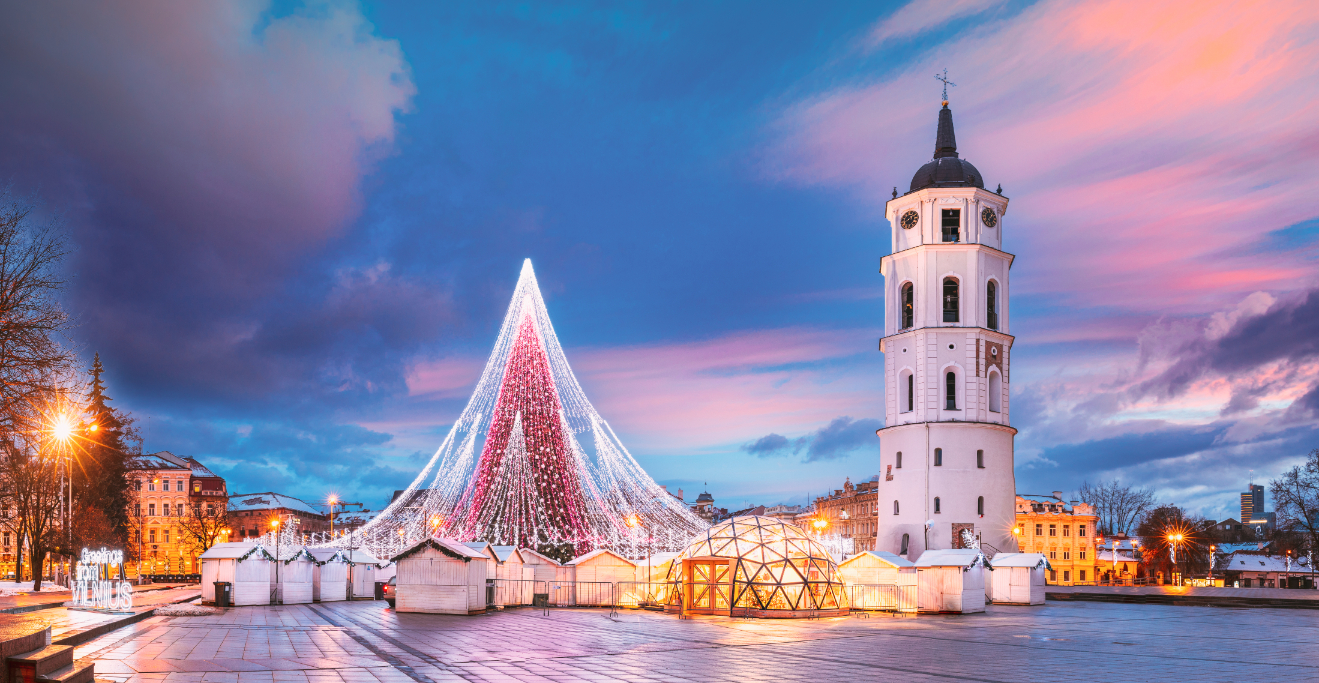Gate of Dawn
One of the best ways to enter Vilnius is through the Gate of Dawn (Aušros vartai), an ancient gateway to the city built in the early 16th century. The gate is especially beautiful on the inside of the wall and houses a highly venerated chapel. A few meters away we also recommend visiting the Church of St. Teresa (Šv. Teresės bažnyčia), with its beautiful Baroque interior, the Orthodox Church of the Holy Spirit, with its striking green altarpiece, and the Basilian door, also Baroque.
Church of Santa Ana
As you will see, there are many very beautiful churches of different religions in Vilnius. Perhaps the one with the most beautiful exterior is the Church of Santa Ana (Onos Bažnyčia, the year 1500), with its original flamboyant Gothic façade. Attached to it is the much more modest Bernardinų Bažnyčios. Behind these two churches, you can take a good walk through Bernardine Park, with its river, its fountains, its groves, etc.
Vilna Ghetto
During the Nazi occupation, there was a Jewish ghetto (divided into two zones) in which thousands of people deprived of liberty lived. Most of them, some 55,000, would end up being killed in the nearby forests. Today in the area we can hardly find a commemorative poster on Žydų street nº3, in the place that the old synagogue used to occupy. Somewhat far from the center is the HKP 562 Labor Camp memorial, which we did not go to. Where we were was in the Choral Synagogue, the only synagogue in the city. It is small but worth a visit.

